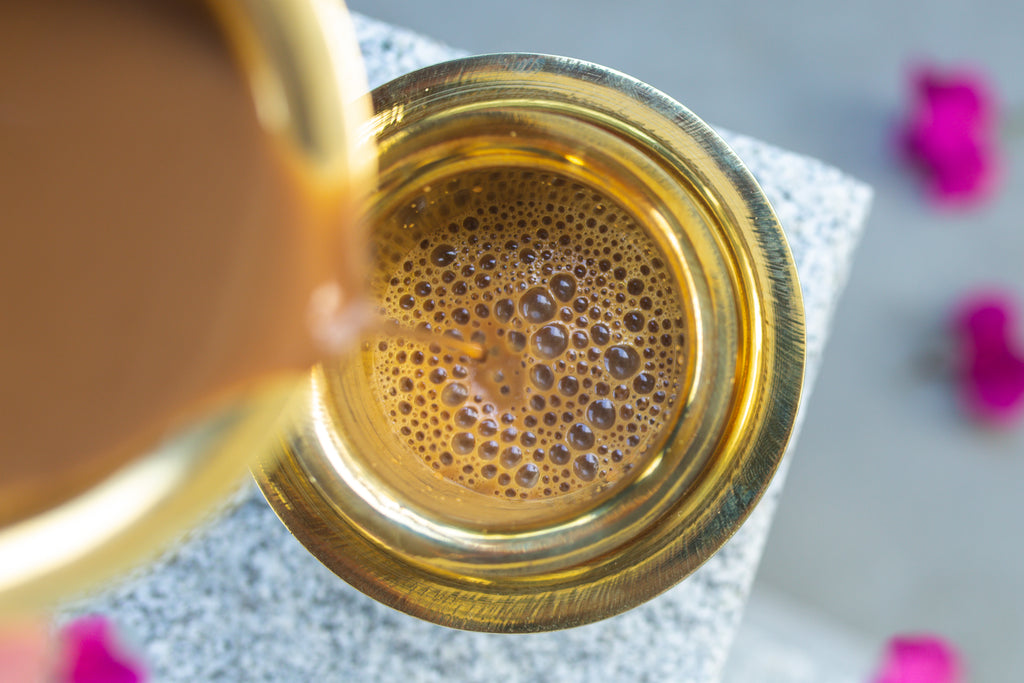
How India Came To Love Chicory

By the combination of a little chicory with coffee, the flavour of the coffee is not destroyed, but there is added to the infusion a richness of flavour, and a depth of colour—a body, which renders it to very many people much more welcome as a beverage. – Charles Dickens
It begs the question, how and why did chicory, a root native to France, end up in our coffee? In short, the addictive caffeinated brew has been expensive for most of the world’s coffee-drinking past. Primarily because coffee was not always available in abundance thanks to political reasons that sometimes resulted in major ports being blocked, affecting the movement of coffee across borders.
There is no data on exactly when people began mixing chicory with coffee, but the practice of blending coffee with chicory reportedly began in France in the early 1800s as a result of a shortage of coffee. As chicory has a similar flavour to coffee without any caffeine, it was mixed together with the coffee to make dwindling supplies stretch and on occasions, as full substitutes.
So, just when and how did coffee, thus far an Arab/Muslim/European experience, make its way into the Indian household? According to Ed Terry - an English chaplain at the English embassy to Emperor Jahangir and an author who wrote about the Mughal Empire and South Asian cuisine in 1616 - most people, at the time, drank no wine at all because of religious restrictions. Instead, they consumed what he described as a “liquor more wholesome than pleasant, they call Coffee; made by a black seed boiled in water, which turns it almost into the same colour, but does very little alter the taste of the water: notwithstanding it is very good to help digestion, to quicken the spirits, and to cleanse the blood." Fast forward to 1780 and coffee houses were en vogue in India.
The British had a key role to play in India’s introduction to and eventual love affair with chicory. They introduced a coffee-chicory essence in the late 18th century called Camp Coffee and over time, South Indians started warming to it, albeit after the addition of milk and sugar. Camp Coffee was a Scottish food product; it was a thick, black syrup - a ‘secret blend’ of water, sugar, 4% caffeine-free coffee essence, and 26% chicory essence. Subsequently, a number of Indian soldiers developed a taste for this chicory mixed coffee, during the world wars that saw a fair bit of rationing. Some of these soldiers then went on to start military hotels and messes after coming back to Madras.
By 1860, coffee cultivation in the Western Ghats was in full swing, and by the late 19th century, some bags of coffee destined for export found their way into the domestic market, paving the way for a new kind of coffee that would go on to assume cult status. Facilitated by the railways and spurred on by enterprising local traders and vendors, coffee moved from roadside stalls into the Tamil home, finding ardent enthusiasts who devised unique ways and means to roast, grind, brew, and serve their own beans. In the process, they elevated filter coffee into an art form and created a coffee culture that practically defines a community.
Today, the process of adding anything between 20% to 45% chicory to coffee is common practice. The benefits of chicory for the coffee drinker are said to be plenty; the probiotic properties present in the insulin in chicory are rumored to improve digestion, and it boasts of antioxidants to help combat thrombosis and inflammation. Additionally, the chicory root contains vitamins C, K, choline, and beta caretone, providing a nutrition boost with a cup of morning coffee
Glitzy coffee bars in urban centers may coexist peacefully with darshinis, coffee at home is both instant and filtered, found on tap at vending machines and served at five-star hotels. But for the original full-bodied Indian filter coffee, one still has to hit the pilgrim trail. It’s places like Madurai and Kumbakonam, Udupi and Mysore that serve coffee that’s sheer magic.